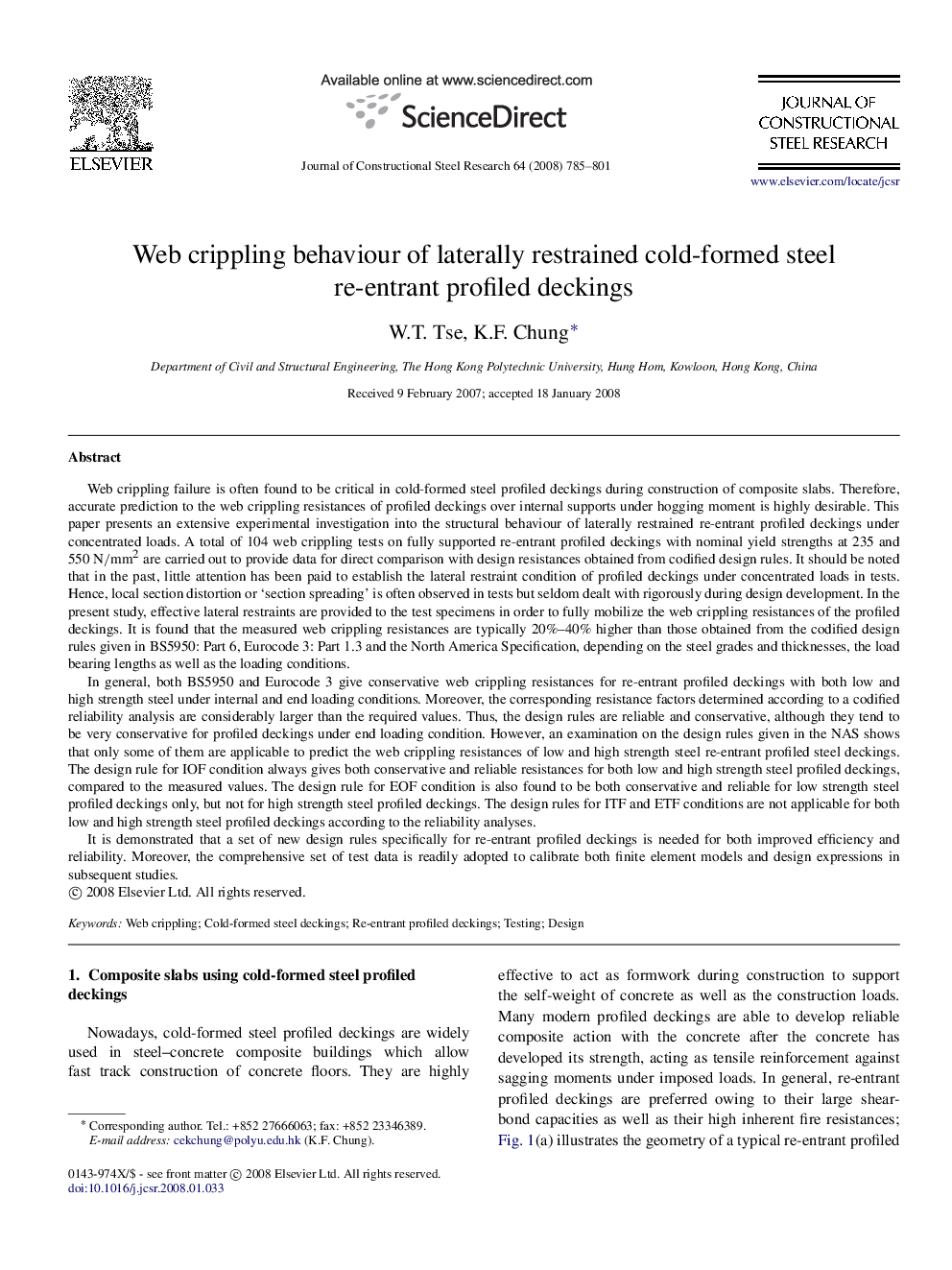| Article ID | Journal | Published Year | Pages | File Type |
|---|---|---|---|---|
| 286171 | Journal of Constructional Steel Research | 2008 | 17 Pages |
Web crippling failure is often found to be critical in cold-formed steel profiled deckings during construction of composite slabs. Therefore, accurate prediction to the web crippling resistances of profiled deckings over internal supports under hogging moment is highly desirable. This paper presents an extensive experimental investigation into the structural behaviour of laterally restrained re-entrant profiled deckings under concentrated loads. A total of 104 web crippling tests on fully supported re-entrant profiled deckings with nominal yield strengths at 235 and 550 N/mm2 are carried out to provide data for direct comparison with design resistances obtained from codified design rules. It should be noted that in the past, little attention has been paid to establish the lateral restraint condition of profiled deckings under concentrated loads in tests. Hence, local section distortion or ‘section spreading’ is often observed in tests but seldom dealt with rigorously during design development. In the present study, effective lateral restraints are provided to the test specimens in order to fully mobilize the web crippling resistances of the profiled deckings. It is found that the measured web crippling resistances are typically 20%–40% higher than those obtained from the codified design rules given in BS5950: Part 6, Eurocode 3: Part 1.3 and the North America Specification, depending on the steel grades and thicknesses, the load bearing lengths as well as the loading conditions.In general, both BS5950 and Eurocode 3 give conservative web crippling resistances for re-entrant profiled deckings with both low and high strength steel under internal and end loading conditions. Moreover, the corresponding resistance factors determined according to a codified reliability analysis are considerably larger than the required values. Thus, the design rules are reliable and conservative, although they tend to be very conservative for profiled deckings under end loading condition. However, an examination on the design rules given in the NAS shows that only some of them are applicable to predict the web crippling resistances of low and high strength steel re-entrant profiled steel deckings. The design rule for IOF condition always gives both conservative and reliable resistances for both low and high strength steel profiled deckings, compared to the measured values. The design rule for EOF condition is also found to be both conservative and reliable for low strength steel profiled deckings only, but not for high strength steel profiled deckings. The design rules for ITF and ETF conditions are not applicable for both low and high strength steel profiled deckings according to the reliability analyses.It is demonstrated that a set of new design rules specifically for re-entrant profiled deckings is needed for both improved efficiency and reliability. Moreover, the comprehensive set of test data is readily adopted to calibrate both finite element models and design expressions in subsequent studies.
